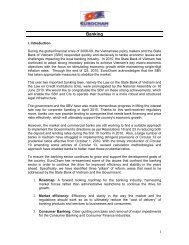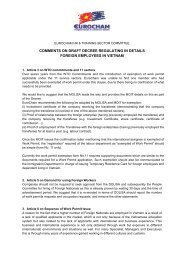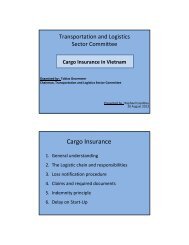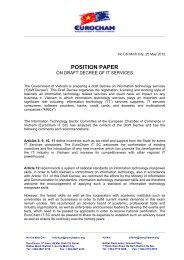ASEAN MUTUAL RECOGNITION ARRANGEMENT ON TOURISM ...
ASEAN MUTUAL RECOGNITION ARRANGEMENT ON TOURISM ...
ASEAN MUTUAL RECOGNITION ARRANGEMENT ON TOURISM ...
You also want an ePaper? Increase the reach of your titles
YUMPU automatically turns print PDFs into web optimized ePapers that Google loves.
Add specific industry terminology to performance criteria where this doesnot distort or narrow the competency outcomesMake amendments and additions to the range statement as long as suchchanges do not diminish the breadth of application of the competency andreduce its portabilityAdd detail to the evidence guide in areas such as the critical aspects ofevidence or resources and infrastructure required where these expand thebreadth of the competency but do not limit its use.Not remove or add to the number and content of elements and performancecriteria.3.9.4 Important NoteThe key to contextualisation is that the rigour and structure of each unit remain,but that the content can be varied to suit the needs of the user, provided the four‘rules’ (see above) are complied with.3.10 Localised Units of Competence<strong>ASEAN</strong> NTOs identified the need to include the two additional units of competencefrom the Child Wise Tourism Program (http://www.childwise.net) into thecurriculum and qualifications framework. Two units of competence have beenadded to CATC – one unit at the Certificate entry level, ‘Perform Child ProtectionDuties relevant to the Tourism Industry’ and the other unit at the Diploma level,‘Develop Protective Environments for Children in Tourism Destinations.’3.11 Challenges in Implementing CATC3.11.1 Orientation and TrainingThere will be a need for orientation and training to fully understand how thequalifications are structured and implemented, especially for users unfamiliar withCompetence-based Training, ACCSTP and the qualifications under CATC. NTOsshould consider how to promote, inform, and provide training and orientation oncountry-by-country basis but perhaps with common, shared resources.3.11.2 Bridging ProgramsConsideration of the development of ‘Bridging Programs’ to facilitate movement ofstudents currently studying, or having recently completed, existing qualificationsinto the revised framework3.11.3 Recognition of Current CompetenceSystems should be developed to assist those with experience but no formalqualifications to have this experienced formally recognised and facilitate theirmovement into the formal vocational training system.P a g e | 28














